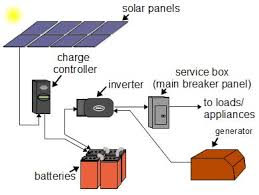Project management is a field that requires continual learning and development. PMs who stay updated on the latest knowledge and trends see their careers take off.
In this blog post, you will discover
8 free project management courses. These courses are available completely free
of charge and they will help you develop your skills as a project manager. If
you’re ready to upgrade your career in project management, check out these top
8 free project management courses now!
1- 1-Diploma in Project Management
T This free online diploma course teaches you how to implement project phases like a professional that gets things done. It guides you through every aspect of project management clearly and simply.
2-
2- Free
E-mail course for project managers
This is your starting point if you want to expand your field of influence as a leader and see tangible results FAST. A free Course for Project Managers, Program Managers, and Team Leaders delivered straight to your inbox.
3- 3- Google project management professional certificate
In this
program, you’ll learn in-demand skills that will have you job-ready in less
than six months.
4- 4-Project Management Basics
A YouTube video
presented by Strategia Netherlands showcasing a quick guide for project
management basics that allows an understanding of project terms, the 5 phases of
project management, and the documents needed for the successful implementation
of the project management plan
5- 5- Project manager Free learning and resource
T Think of project management as the art and science of making things happen. Project managers are detail-oriented problem solvers who motivate and lead a project team to deliver a client's solution. They initiate, plan, execute, and monitor projects that lead to success.
6- 6- Project Management Updated – PMBOK7
T This course covers:
·
The values of project management and the twelve
principles that guide behavior
·
The performance domains of stakeholders, teams,
development approach and lifecycle, and planning
·
The performance domains of project work, delivery,
measurement, and uncertainty
·
The tailoring of projects, and the use of models,
methods, and artifacts
Link to register for the course
7- 7- PMP Project Management - Fundamental Concepts for Beginners
This is a free course for newcomers to project management who want to learn what sitting the official PMP exam entails.
8 – Principles of agile project management
This is a free online project management course hosted on the edx platform.
Project management is a challenging
yet rewarding career for those who enjoy organization and logistics. To excel
in this role, it’s crucial to build your skills with project management
courses.
Consider these free project management courses if you want to take on a new project manager position. You can start
any of these courses today, at your own pace and conveniently from home.
Visit our website www.zpmengineers.com for more resources
and updates.
.jpg)

.jpg)





.jpg)

.jpg)




